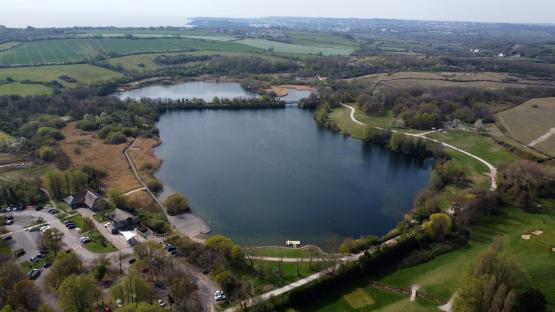A COVID-19 catchphrase that has emerged during this prolonged pandemic seems to be applicable to the current state of Alberta's oil sector: “Things may look a little bit different this year.”
Tuesday marked the one-year anniversary of a startlingly swift and unprecedented slide for oil prices.
On April 20, 2020, U.S. crude oil futures turned negative for the first time in history. Analysts have said the development was driven in part by the sudden drop in demand for the commodity because of the COVID-19 pandemic, as well as by a price war between Russia and Saudi Arabia.
READ MORE: Stocks drop as U.S. crude oil futures prices turn negative for the first time in history
Kevin O'Dwyer, the president and CEO of Edmonton-based oilfield service company Tier 1 Energy Solutions, said he has a vivid recollection of the extraordinary one-day price slide.
“It was almost surreal to see it start to move, and then to start following what was being published and what the analysts were saying,” he told Global News on Tuesday. “I've been in the business a long time and I've never seen anything (like it).
“There's no way I would have ever said to anybody, ‘Hey, it's going to trade in negative territory.'”
Watch below: Some Global News videos about volatile oil prices in 2020.
Kenney responds to negative value Canadian oil
02:49 Kenney responds to negative value Canadian oil 01:50 Western Canadian Select oil price dips below zero, WTI also dropping on Monday 01:45 Crude oil futures prices turn negative for the first time in history 01:44 Crude awakening: Oil prices plummet to negative territory 02:29 Oil prices drop to historic lows amid pandemic 01:45 Oil price crash prompts calls for green energyWhen the U.S. West Texas Intermediate (WTI) contract turned negative, it resulted in something unheard of: sellers offering buyers US$37.63 a barrel.
“It was huge money that was made and lost,” said Richard Masson, an executive fellow at the University of Calgary's School of Public Policy.
“Oil is one of the most liquid markets in the world (and) one of the most widely traded commodities, and so when you're on the wrong side of it, the numbers add up in a hurry.”
READ MORE: Oil prices are in the negative: COVID-19 rules to stay home played a huge part
Masson said a unique set of circumstances around oil futures contracts created the conditions for oil prices going into negative territory that day.
“A year ago today, people didn't have the ability to take delivery of oil in Cushing, Texas where the big tank farm is,” he said. “They were desperate to sell out of their futures positions, they had no intention of being able to take delivery and so they panicked.
“The folks who had the ability to take delivery knew that they had a strong position, so they just kept bidding down the price throughout they day until… (the price) was $37 a barrel. So people had to pay others to take their oil from them because they had to follow through on their contract.”
“There was no playbook on it, so managers and business leaders were like, ‘Geez, I'd better start figuring this out,'” O'Dwyer said.
The development was a dire one for oil-rich Alberta. It put the Alberta oil sector jobs in jeopardy and erased the credibility of assumptions made by the provincial government for its budget.
“This strikes at the heart of the entire Canadian economy,” Premier Jason Kenney said at the time.
READ MORE: Kenney says higher oil prices boosting Alberta's bottom line as budget day looms
The global oil industry has bounced back considerably since one year ago. WTI has been trading at over US$60 a barrel recently, an improvement Masson attributed to a resurgence in global demand, particularly in Asia, as well as steps being taken to control supply.
“Since then, OPEC Plus has really had some discipline, taking barrels off the market,” he said, noting that there have been a number of mergers and acquisitions in the energy sector in the past year and that he believes the industry is well-positioned to begin investing in new production.
“I think we're on pretty solid ground. I think a lot of folks learned lessons. OPEC Plus realized they need to work together to manage the market — it's in their interest to do so.”
O'Dwyer said despite the industry's recovery, he believes that in some ways, it has been changed forever.
“I don't believe that the business is ever going to go back to the way it was before in terms of investors,” he said.
“Investors have become much more demanding (and there is a) much more higher degree of accountability. It's spending within your cash — not outspending your cashflow like we used to do as an industry — and giving a return on the investment to our investors instead of continually spending, reinvesting in the company, building more capacity (and) drilling more wells to create more production opportunities.
“(We're) living within a budget now.”
Masson said many forecasts for the industry he's looked at suggest demand will continue to increase in 2021 and that it will likely return to somewhere around where it was before the pandemic took hold across the globe.
“It's unlikely in the next while that we're going to see such a wild ride,” he said, adding that he believes the industry may see increased investment, depending on some other factors.
“The biggest challenge Alberta's had over the last few years is a lack of market access,” Masson said. “You don't want to approve new drilling or new oilsands projects if you don't have pipelines that allow you to get your crude to market and get a good price for it.
“Line 3 is supposed to start up later in 2021, which is about 400,000 barrels per day of new pipeline capacity, and our more important Trans Mountain expansion in 2023 would be 600,000 barrels per day.
“As I see it, cashflow is pretty strong right now. Companies will pay down debt, put some cash on their balance sheets and wait for the signals to kind of give them confidence that they can invest in new production, and that's going to be pipelines getting completed and continued strong oil prices.”
Watch below: Some Global News videos about pipelines.
Trans Mountain pipeline project clears another hurdle
01:51 Trans Mountain pipeline project clears another hurdle 02:15 Trans Mountain pipeline appeal dismissed by Supreme Court 01:32 Jason Kenney celebrates Trans Mountain court decision as ‘critical victory'O'Dwyer said while the industry is certainly rebounding, that process is still ongoing.
“It's much better,” he said. “It started to come back up, but the problem was it was like an old car climbing up a steep hill.
“We had a challenging Q2. Q3 we firmly believed we had a pulse and a heartbeat… Q4 was better… Q1 is better… (but) we're still way off.”
When asked if he believes his industry could ever face the kind of day it experienced last April again, O'Dwyer indicated nothing can be entirely ruled out if it has happened before.
“There's an old saying that history does repeat itself,” he said. “I've never thought of it happening again… Yeah, it's possible…if everything lined up the right way again.”
–With files from Global News' Tom Vernon and Reuters' Noel Randewich




